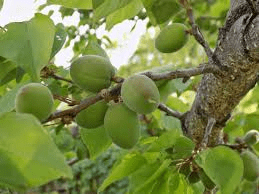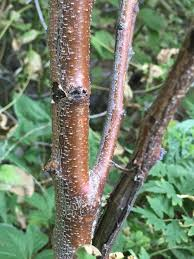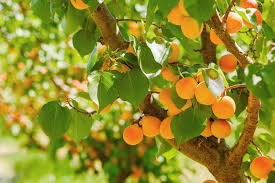Apricot stems, the supportive structures of the apricot tree (Prunus armeniaca), play a crucial role in the growth, stability, and overall health of the plant. These stems, primarily composed of woody tissue, serve as conduits for water, nutrients, and photosynthates, facilitating the tree’s physiological processes. The structure of apricot stems is integral to their function, comprising several layers, each with specific roles.
The outermost layer of the apricot stem is the bark, which includes the protective periderm and the living phloem. The periderm, made up of cork cells, provides a barrier against physical damage, pathogens, and water loss. Beneath the periderm lies the phloem, a vital tissue responsible for the transport of photosynthates (sugars produced during photosynthesis) from the leaves to other parts of the tree, including the roots and growing fruits.
Inside the phloem is the cambium, a thin layer of meristematic cells that are essential for the growth of the stem. The cambium is responsible for the production of new xylem and phloem cells. The continuous activity of the cambium results in the secondary growth of the stem, increasing its girth over time. This growth is particularly important for apricot trees as it enables them to support the weight of their fruit and withstand environmental stresses.
The xylem, located inward from the cambium, is the primary tissue responsible for the transport of water and dissolved minerals from the roots to the rest of the tree. The xylem consists of various cell types, including vessel elements and tracheids, which form a continuous network of tubes. This network facilitates the upward movement of water through capillary action and transpiration pull. The structural integrity provided by the xylem is critical, as it supports the tree’s framework and helps maintain its erect posture.
Within the xylem lies the heartwood, the central, often darker part of the stem. Heartwood consists of older xylem cells that have ceased to participate in water transport but contribute to the mechanical strength of the stem. This non-living tissue is typically more resistant to decay, providing additional longevity and durability to the apricot tree.
Apricot stems also feature a system of parenchyma cells within both the xylem and phloem. These cells store nutrients and water, contributing to the tree’s ability to survive periods of drought and other stresses. Additionally, parenchyma cells play a role in wound healing and regeneration, allowing the tree to recover from physical damage.
The anatomy of apricot stems is adapted to the tree’s growth environment. In response to seasonal changes, apricot trees undergo physiological adjustments. During the dormant winter period, metabolic activities in the stems slow down, conserving energy. As temperatures rise in spring, the cambium becomes active again, leading to the production of new xylem and phloem cells and resumption of active growth.
Apricot stems also interact with the surrounding ecosystem. The bark provides habitat and food for various organisms, including insects and fungi. In some cases, these interactions can lead to challenges such as infestations or diseases, which can compromise the health of the tree. Effective management of apricot orchards includes monitoring stem health and implementing practices to protect against pests and pathogens.
Apricot stems are vital components of apricot trees, supporting their growth, nutrient transport, and structural integrity. The intricate anatomy of these stems, from the protective bark to the supportive heartwood, enables apricot trees to thrive in their environments and produce the sweet, nutritious fruits they are known for. Understanding the structure and function of apricot stems is essential for the effective cultivation and care of apricot trees, ensuring their productivity and longevity.
The Economic Importance and Uses of Apricot Stems

1. Livestock Feed: Apricot stems can be processed into nutritious feed for livestock. Farmers often use the stems as a cost-effective supplement for cattle and sheep.
2. Soil Fertilizer: When decomposed, apricot stems enrich the soil with organic matter, improving soil fertility and structure.
3. Biofuel Production: Apricot stems can be converted into biofuel, providing a renewable energy source.
4. Mulching Material: Used as mulch, apricot stems help retain soil moisture and suppress weeds.
5. Paper Production: The fibers in apricot stems are suitable for making paper, offering a sustainable alternative to traditional wood pulp.
6. Fiberboard Manufacturing: Compressed apricot stems are used to create fiberboard, an eco-friendly building material.
7. Erosion Control: Apricot stems can be used in erosion control projects to stabilize soil and prevent land degradation.
8. Craft and Decorative Items: Artisans use apricot stems to create handcrafted items like baskets and decorative pieces.
9. Composting: Apricot stems are compostable, contributing to sustainable waste management practices.
10. Activated Charcoal: Apricot stems can be processed into activated charcoal, used for water purification and air filtration.
11. Mushroom Cultivation: The stems serve as a growing medium for certain types of mushrooms, providing a cost-effective substrate.
12. Animal Bedding: Processed apricot stems make excellent bedding material for small animals.
13. Biochar Production: Biochar made from apricot stems improves soil health and sequesters carbon.
14. Pellet Fuel: Apricot stems can be compressed into pellets for use in pellet stoves and boilers.
15. Essential Oils: Some apricot stems contain oils that can be extracted and used in cosmetics and aromatherapy.
16. Handmade Paper: Artisans use apricot stems to produce handmade paper with unique textures.
17. Carbon Sequestration: Using apricot stems in various applications helps reduce atmospheric carbon levels.
18. Garden Trellises: Apricot stems can be crafted into trellises for supporting climbing plants in gardens.
Read Also: How to Establish an Apiary and Produce Honey
The Products and By-products That Can Be Derived From Apricot Stems

1. Biofuel: Apricot stems can be processed into biofuel through methods like pyrolysis or fermentation.
2. Mulch: The stems can be chipped and used as mulch to conserve soil moisture and suppress weeds.
3. Fiberboard: Apricot stems are compressed into fiberboard for construction and furniture making.
4. Paper: The fibers from apricot stems are processed into paper pulp for paper production.
5. Compost: Composting apricot stems creates nutrient-rich compost for gardening.
6. Animal Feed: After processing, apricot stems can be used as livestock feed.
7. Mushroom Substrate: The stems serve as a growing medium for mushroom cultivation.
8. Activated Charcoal: Apricot stems are carbonized to produce activated charcoal for filtration purposes.
9. Essential Oils: Extraction methods like steam distillation are used to obtain essential oils from apricot stems.
10. Biochar: Biochar produced from apricot stems enhances soil health and carbon sequestration.
11. Pellets: The stems are compressed into fuel pellets for heating applications.
12. Handmade Paper: Craftspeople use apricot stems to create textured, handmade paper.
13. Animal Bedding: Processed stems provide comfortable bedding for small animals.
14. Garden Trellises: Crafted into trellises, apricot stems support climbing plants.
15. Erosion Control Structures: Used in erosion control projects, apricot stems stabilize soil.
16. Decorative Items: Artisans create baskets and other decorative items from apricot stems.
17. Soil Amendment: Decomposed apricot stems improve soil structure and fertility.
Read Also: The Benefits of Beekeeping and Honey Production
Frequently Asked Questions (FAQ’s) About Apricot Stems

1. What are apricot stems used for? Apricot stems have multiple uses including livestock feed, mulch, biofuel, and more.
2. Can apricot stems be used as animal feed? Yes, they can be processed into nutritious feed for livestock.
3. How are apricot stems turned into biofuel? Through processes like pyrolysis or fermentation.
4. Are apricot stems good for composting? Yes, they decompose into nutrient-rich compost.
5. Can apricot stems be used in erosion control? Yes, they help stabilize soil and prevent erosion.
6. How are apricot stems used in paper production? The fibers are processed into pulp for making paper.
7. What products can be made from apricot stems? Products include biofuel, mulch, fiberboard, and handmade paper.
8. Are there any decorative uses for apricot stems? Yes, artisans create baskets and decorative items from them.
9. How do apricot stems benefit soil health? They improve soil fertility and structure when decomposed.
10. Can apricot stems be used in mushroom cultivation? Yes, they serve as a cost-effective growing medium for mushrooms.

